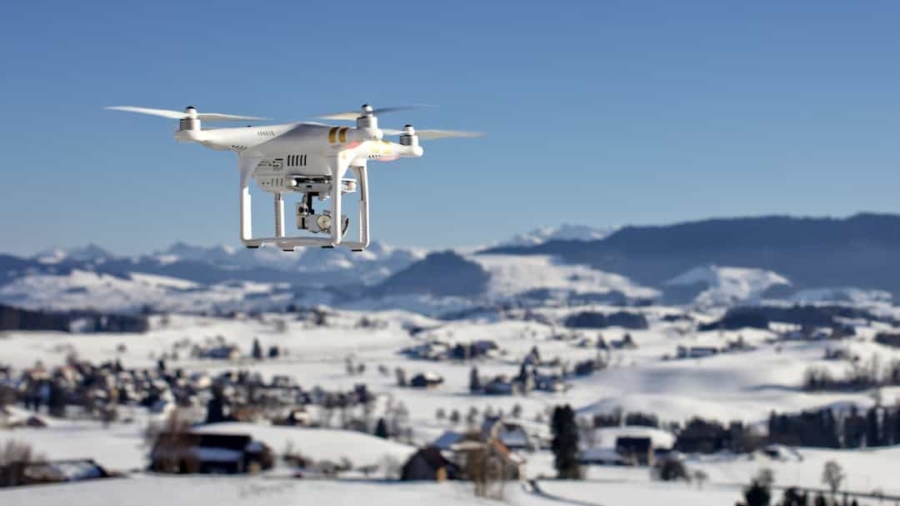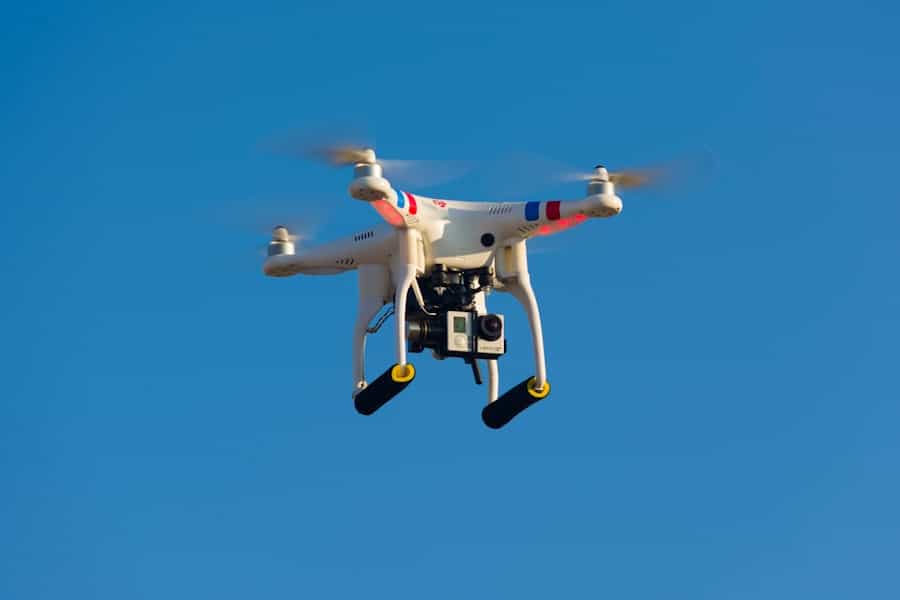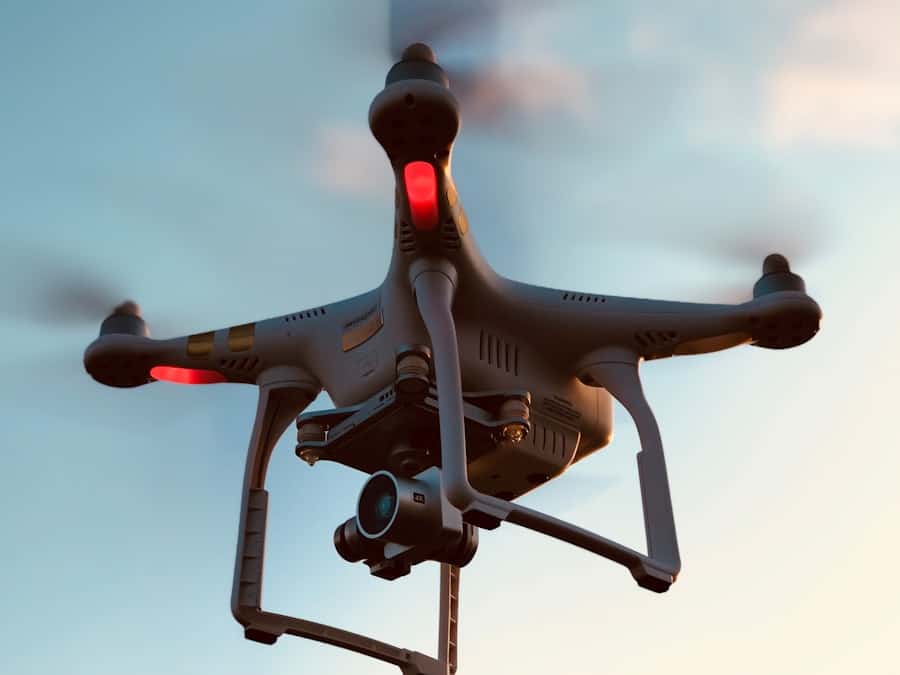Real-time GPS technology has revolutionized various industries, providing precise location data that is crucial for navigation and tracking. The Global Positioning System (GPS) operates through a network of satellites that transmit signals to receivers on the ground, allowing for accurate positioning anywhere on Earth. This technology has evolved significantly since its inception, with advancements in satellite technology, signal processing, and data integration leading to enhanced accuracy and reliability.
In the context of drone operations, real-time GPS is not merely a tool for navigation; it is a foundational element that underpins the entire functionality of unmanned aerial vehicles (UAVs). The integration of real-time GPS into drone technology has opened up new possibilities for applications ranging from aerial photography and surveying to agricultural monitoring and search-and-rescue missions. As drones become more prevalent in both commercial and recreational sectors, the demand for precise navigation and flight stability has surged.
Real-time GPS provides the necessary framework for drones to operate safely and efficiently, ensuring that they can navigate complex environments while maintaining their intended flight paths. This article delves into the multifaceted role of real-time GPS technology in enhancing drone flight stability, navigation, obstacle avoidance, precision landing, and autonomous flight control.
Key Takeaways
- Real-time GPS technology is essential for providing accurate and up-to-date location information for drones.
- GPS plays a crucial role in ensuring stability and control during drone flights, especially in challenging weather conditions or complex environments.
- Real-time GPS enhances drone navigation by providing precise location data and enabling efficient route planning and execution.
- Real-time GPS technology helps drones avoid obstacles by providing real-time updates on their surroundings and enabling them to adjust their flight path accordingly.
- Precision landing for drones is made possible through real-time GPS technology, allowing for accurate and safe landings in designated areas.
The Importance of GPS for Drone Flight Stability
The stability of a drone during flight is paramount for achieving successful outcomes in various applications. Real-time GPS plays a critical role in maintaining this stability by providing continuous updates on the drone’s position relative to its intended flight path. This information allows onboard systems to make real-time adjustments to the drone’s altitude, speed, and direction, ensuring that it remains stable even in challenging conditions such as wind gusts or sudden changes in terrain.
Without accurate GPS data, drones would struggle to maintain their intended course, leading to potential crashes or loss of control. Moreover, the importance of GPS extends beyond mere positioning; it also encompasses the synchronization of multiple drones operating in close proximity. In scenarios where several drones are deployed simultaneously, such as in agricultural monitoring or aerial surveying, real-time GPS enables precise coordination among them.
Each drone can receive location data from the same satellite constellation, allowing for synchronized movements and reducing the risk of collisions. This level of coordination is essential for maximizing efficiency and ensuring safety during complex operations.
How Real-Time GPS Enhances Drone Navigation
Real-time GPS significantly enhances drone navigation by providing accurate positional data that informs flight planning and execution. Drones equipped with advanced GPS receivers can determine their location within a few centimeters, which is crucial for applications requiring high precision. For instance, in surveying and mapping tasks, drones can create detailed topographical maps by flying predetermined paths while continuously updating their position using real-time GPS data.
This capability allows for the collection of high-resolution imagery and data that can be processed into actionable insights. In addition to improving positional accuracy, real-time GPS also facilitates advanced navigation features such as geofencing and waypoint navigation. Geofencing allows operators to set virtual boundaries within which a drone can operate, preventing it from straying into restricted areas or hazardous zones.
This feature is particularly important in urban environments where airspace is congested and regulated. Waypoint navigation enables drones to follow a series of predetermined points in space, allowing for automated flight paths that can be adjusted on-the-fly based on real-time conditions. Together, these features enhance the overall navigational capabilities of drones, making them more versatile and reliable.
The Role of Real-Time GPS in Avoiding Obstacles
Obstacle avoidance is a critical aspect of drone operation, particularly in environments where physical barriers may pose risks to flight safety.
By integrating GPS data with sensor inputs, drones can create a comprehensive understanding of their surroundings, allowing them to navigate safely around obstacles.
For example, when a drone approaches a building or tree, its onboard systems can use real-time GPS data to determine its distance from the obstacle and calculate an appropriate flight path to avoid it. This capability is essential for autonomous drones operating in dynamic environments where human intervention may not be possible. Furthermore, as drones become more sophisticated with the incorporation of artificial intelligence and machine learning algorithms, the ability to process real-time GPS data alongside sensor information will enhance their obstacle avoidance capabilities even further.
This synergy between GPS technology and advanced sensing systems ensures that drones can operate safely in complex environments.
Real-Time GPS and Precision Landing for Drones
Precision landing is another area where real-time GPS technology has made significant strides. The ability to land a drone accurately on a designated spot is crucial for various applications, including package delivery, emergency response, and agricultural tasks. Real-time GPS provides the necessary positional accuracy to achieve this level of precision.
By continuously receiving satellite signals during the landing approach, drones can adjust their descent trajectory to ensure they land within a few centimeters of their target. In addition to enhancing landing accuracy, real-time GPS also enables drones to perform automated landing procedures. Many modern drones are equipped with advanced algorithms that utilize GPS data to execute complex landing maneuvers autonomously.
For instance, when delivering a package to a specific location, a drone can use real-time GPS coordinates to identify the optimal landing spot while accounting for factors such as wind conditions and surrounding obstacles. This capability not only improves operational efficiency but also reduces the risk of accidents during landing.
Real-Time GPS and Autonomous Flight Control
Adapting to Changing Environmental Conditions
Autonomous flight control systems utilize real-time GPS data to make instantaneous adjustments based on changing environmental conditions. For instance, if a drone encounters unexpected turbulence or wind shear during its flight, it can use its GPS positioning information to recalibrate its altitude and heading in real time. This adaptability is crucial for maintaining stable flight in unpredictable conditions and ensures that drones can complete their missions effectively.
Enhancing Operational Efficiency and Expanding Applications
The combination of real-time GPS with advanced algorithms allows for sophisticated features such as automated takeoff and landing sequences. Drones can autonomously navigate from point A to point B while avoiding obstacles along the way, all while relying on real-time GPS data for guidance. This level of autonomy not only enhances operational efficiency but also expands the range of applications for drones across various industries.
Unlocking the Full Potential of Autonomous Drones
The integration of real-time GPS technology has unlocked the full potential of autonomous drones, enabling them to operate with greater precision, flexibility, and safety. As the technology continues to evolve, we can expect to see even more advanced features and applications emerge, further transforming the drone industry.
The Future of Real-Time GPS Technology for Drones
As technology continues to evolve, the future of real-time GPS for drones looks promising. Innovations such as multi-frequency GNSS (Global Navigation Satellite System) receivers are set to enhance positional accuracy even further by utilizing signals from multiple satellite constellations beyond just GPS, including GLONASS, Galileo, and BeiDou. This multi-constellation approach will provide greater redundancy and reliability in positioning data, particularly in urban environments where signal obstructions are common.
Additionally, advancements in signal processing techniques will enable drones to achieve centimeter-level accuracy in real time, making them suitable for even more precise applications such as infrastructure inspection and precision agriculture. The integration of real-time GPS with emerging technologies like 5G networks will also facilitate faster data transmission between drones and ground control stations, enabling more responsive control and monitoring capabilities. Moreover, as regulatory frameworks evolve to accommodate the growing use of drones in various sectors, the demand for enhanced safety features will drive further innovations in real-time GPS technology.
Features such as advanced geofencing capabilities and improved obstacle detection systems will become standard as operators seek to ensure compliance with safety regulations while maximizing operational efficiency.
The Impact of Real-Time GPS on Drone Flight Stability
The impact of real-time GPS technology on drone flight stability cannot be overstated. It serves as the backbone for navigation, obstacle avoidance, precision landing, and autonomous flight control—each critical component that contributes to safe and efficient drone operations. As advancements continue in both GPS technology and drone capabilities, we can expect even greater levels of precision and reliability in UAV operations across various industries.
The integration of real-time GPS into drone systems has not only enhanced their operational capabilities but has also paved the way for innovative applications that were once thought impossible.
As we look toward the future, it is clear that real-time GPS will remain an essential element driving the evolution of drone technology and its applications worldwide.
If you are interested in learning more about creating training videos, you may want to check out the article Best Software to Create Training Videos. This article provides valuable information on the top software options available for creating engaging and informative training videos. By utilizing the right software, you can enhance your drone flight stability training videos and provide a more effective learning experience for your audience.
FAQs
What is real-time GPS?
Real-time GPS refers to the ability of a GPS system to provide continuous and up-to-date location information, allowing for immediate and accurate tracking of an object’s position.
How does real-time GPS improve drone flight stability?
Real-time GPS allows drones to constantly update their position and make necessary adjustments to maintain stability, even in changing environmental conditions. This helps drones to stay on course and avoid potential obstacles.
What are the benefits of real-time GPS for drone flight stability?
Real-time GPS helps drones to maintain a steady and predictable flight path, even in challenging conditions such as strong winds or GPS signal interference. This can improve the overall safety and reliability of drone operations.
Can real-time GPS help drones to navigate more accurately?
Yes, real-time GPS enables drones to navigate with greater precision by providing continuous updates on their exact position. This can be especially useful for tasks that require precise positioning, such as aerial photography or surveying.
Are there any limitations to real-time GPS for drone flight stability?
While real-time GPS can significantly improve drone flight stability, it may still be affected by factors such as signal interference or limitations in GPS accuracy. Additionally, other sensors and technologies may be needed to complement real-time GPS for optimal flight stability.



